- myFICO® Forums
- FICO Scoring and Other Credit Topics
- Understanding FICO® Scoring
- 50% may be utilization threshold for individual ca...
- Subscribe to RSS Feed
- Mark Topic as New
- Mark Topic as Read
- Float this Topic for Current User
- Bookmark
- Subscribe
- Mute
- Printer Friendly Page
50% may be utilization threshold for individual card
Is your credit card giving you the perks you want?
Browse credit cards from a variety of issuers to see if there's a better card for you.
- Mark as New
- Bookmark
- Subscribe
- Mute
- Subscribe to RSS Feed
- Permalink
- Report Inappropriate Content
Re: 50% may be utilization threshold for individual card
In my opinion, the FICO algorithms insofar as they related to utilization are based on percentages, not raw dollar amounts.
The most clear percentages of which I am aware are 29% and 49% in individual revolving account utilization, and 9% in aggregate installment account utilization.
I know of no clear breakpoints in aggregate revolving utilization, but do believe that 1-3% is optimal, 6% or less loses very few points, and that the higher it goes, the worse it is.
I do not consider the wording of a negative reason code "amounts owed" as evidence that raw dollar amounts are controlling.
If anyone with a totally clear, non-buffered, inactive profile can figure out a way to test it, I would be pleased to see the results. But I don't know how you could meaningfully test it, since in aggregate revolving utilization any increase in balances would increase both raw dollar amounts and the percentage.

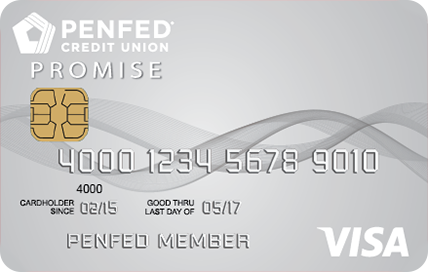

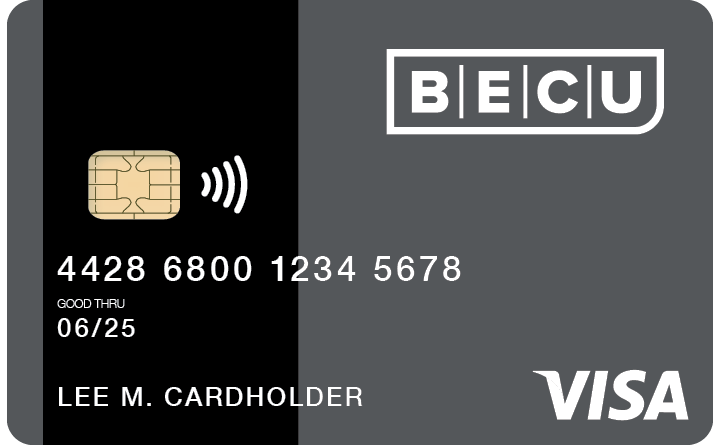








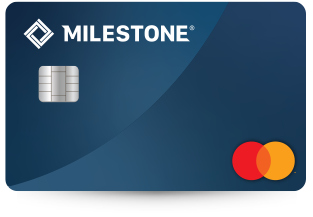


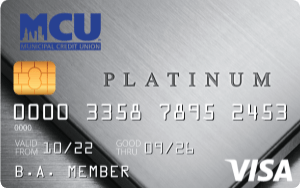
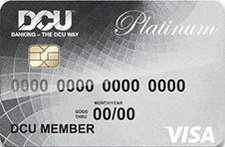




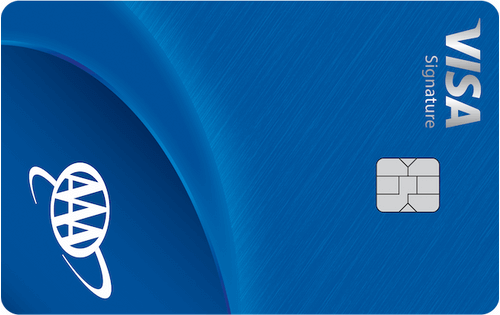
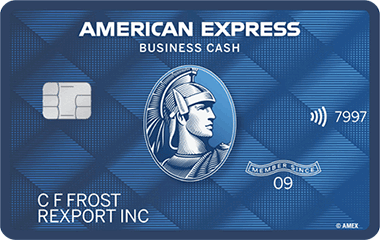
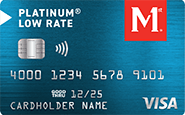



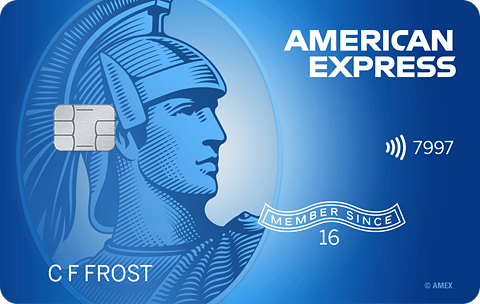




Total revolving limits 569520 (505320 reporting) FICO 8: EQ 689 TU 684 EX 685
- Mark as New
- Bookmark
- Subscribe
- Mute
- Subscribe to RSS Feed
- Permalink
- Report Inappropriate Content
Re: 50% may be utilization threshold for individual card
@SouthJamaica wrote:In my opinion, the FICO algorithms insofar as they related to utilization are based on percentages, not raw dollar amounts.
The most clear percentages of which I am aware are 29% and 49% in individual revolving account utilization, and 9% in aggregate installment account utilization.
I know of no clear breakpoints in aggregate revolving utilization, but do believe that 1-3% is optimal, 6% or less loses very few points, and that the higher it goes, the worse it is.
I do not consider the wording of a negative reason code "amounts owed" as evidence that raw dollar amounts are controlling.
If anyone with a totally clear, non-buffered, inactive profile can figure out a way to test it, I would be pleased to see the results. But I don't know how you could meaningfully test it, since in aggregate revolving utilization any increase in balances would increase both raw dollar amounts and the percentage.
I think you've shown that the two - percentages and amount owed - are being used in tandem, and the weighting on percentages is changed by the dollar amount.
It seems that way based on my observations that nothing matters much in the (0-9]% range, for my own profile data and anecdotes here and there from others that have similar average total credit limits of around $10K-$40K. We just don't see much movement at all, if any.
But you definitely do, and that cannot be ignored. You see score changes at small percentage changes and I do not. I expect it's this way for the majority of people because FICO has been using those general percentage guidelines for a very long time.
During every interview I've listened to with Tom Quinn (who will be here on the forum answering questions next week), he will be asked about utilization and reply with that general 'under 10% rule'. As will most others from FICO that are interviewed for various articles. I am sure they don't mean that as 'everyone under 10% will be ok'.
Mathematically speaking, percentages alone are meaningless without the denominator/divisor. Scorecards are not segmented by total credit limit. That's a good thing because it gives everyone an equal opportunity at a good credit rating.
I guess we'll just go our own ways now with finding an answer to what really matters in utilization calculations.
- Mark as New
- Bookmark
- Subscribe
- Mute
- Subscribe to RSS Feed
- Permalink
- Report Inappropriate Content
Re: 50% may be utilization threshold for individual card
Published FICO SCORE FACTOR reason statements from Experian clearly identify both proportion (utilization) is a scoring factor (code 10) and debt in dollars is a scoring factor (code 11). Text in code 11 further specifies debt in dollars is looked at in aggregate - e.g. redistribution of revolving debt among accounts while maintaining the same overall revolving debt won't change the impact of this attribute. [of course transferring debt to an installment loan would reduce revolving debt and thus the score impact of score factor code 11... and score factor code 10].
There are ways to isolate score factor 10 from score factor 11 thru controlled testing. However, it requires multiple testers with clean files that won't be crossing any aging boundries during the test phase. One group of testers would have relatively small aggregate CL and the other relatively large aggregate CL - say $20k to $30k for group A and $100k to $200k for group B.
1) Each group takes their respective aggregate revolving utization from say 5% to 8% keeping # cards with balances the same. Compare before and after Fico scores by individual. Avoid having balance increases take any individual card thru a known threshold.
2) If 5% to 8% is not a factor then score should remain the same unless a dollar milestone is passed. Unlikely for group A but possible for group B profiles.
Will paste reason code table later. Unable to access and paste at this time.
Fico 8: .......EQ 850 TU 850 EX 850
Fico 4 .....:. EQ 809 TU 823 EX 830 EX Fico 98: 842
Fico 8 BC:. EQ 892 TU 900 EX 900
Fico 8 AU:. EQ 887 TU 897 EX 899
Fico 4 BC:. EQ 826 TU 858, EX Fico 98 BC: 870
Fico 4 AU:. EQ 831 TU 872, EX Fico 98 AU: 861
VS 3.0:...... EQ 835 TU 835 EX 835
CBIS: ........EQ LN Auto 940 EQ LN Home 870 TU Auto 902 TU Home 950
- Mark as New
- Bookmark
- Subscribe
- Mute
- Subscribe to RSS Feed
- Permalink
- Report Inappropriate Content
Re: 50% may be utilization threshold for individual card
@Thomas_Thumb wrote:Published FICO SCORE FACTOR reason statements from Experian clearly identify both proportion (utilization) is a scoring factor (code 10) and debt in dollars is a scoring factor (code 11). Text in code 11 further specifies debt in dollars is looked at in aggregate - e.g. redistribution of revolving debt among accounts while maintaining the same overall revolving debt won't change the impact of this attribute. [of course transferring debt to an installment loan would reduce revolving debt and thus the score impact of score factor code 11... and score factor code 10].
We've had the full table posted in the General Scoring Primer thread for a while now. I got it from a FICO PDF and the source link is there as well. (Link to post, scroll a bit to Negative Reason Code Chart)
There is also score factor 1 which looks at all accounts: (codes are in left-to-right order, EQ, TU, EX)
Amount owed on accounts is too high | 1 | 1 | 1 | Balance track |
Amount owed on revolving accounts is too high | 11 | 11 | 11 | Balance track |
Proportion of balances to credit limits on bank/national revolving or other revolving accounts is too high | 10 | 10 |
| Percent track |
Ratio of balance to limit on bank revolving or other rev accts too high |
|
| 10 | Percent track |
Low percentage isn't necessarily going to save someone from a large point reduction. But it will work for a majority with average total credit limits, so people from FICO will usually give a general guideline of 'under 10%, under 30%'.
- Mark as New
- Bookmark
- Subscribe
- Mute
- Subscribe to RSS Feed
- Permalink
- Report Inappropriate Content
Re: 50% may be utilization threshold for individual card
@SouthJamaica wrote:
If anyone with a totally clear, non-buffered, inactive profile can figure out a way to test it, I would be pleased to see the results. But I don't know how you could meaningfully test it, since in aggregate revolving utilization any increase in balances would increase both raw dollar amounts and the percentage.
There are a couple of ways one can distinguish raw dollars from percentages.
1) From 11/13/19 to 11/14/19 there was exactly one change on my Ex CR: The balance on one card increased from $293 to $640. As a result my total revolving balance changed from $7829 to $8076 and my Agg Util from 2.389% to 2.465%. My Ex Fico 3 dropped 8 points on that day. In this case the score change seems to be caused by a $8000 treshold in "Total Revolving Balance" rather than by a change in Agg Util.
2) Suppose for simplicity your total credit limit is $100,000 and your total revolving balance changes from $5600 to $6400 and say your Ex 8 score drops. This could be due to the raw dollars crossing $6,000 or the agg util crossing 6%.
Assume sometime later that your total credit limit has increased to $110,000, your total revolving balance changes from $6200 to $5800 and your Fico 8 does not change. Then it seems that $6,000 is not a threshold and that previous change in Ex 8 was caused by a 6% threshold in Agg Util. (But since time has passed by, your profile might have changed and $6,000 might have been a threshold, but no longer is)
From your posts its seems that you are pulling your Experian CRs and scores regulary. So if you look over all that data and compute Total Balance, Total Revolving Balance and Agg Rev Util you might to able to figure out whether your changes are due to raw dollar or util.
But you should also be aware that it is not always clear which accounts to include in your calculation. I, for example, have credit unions cards, AU cards and a Heloc, and I'm not sure which of these accounts should be included. So I wrote a spread sheet which lets me compute all the metrics for the different possible sets of accounts. Closed accounts with balances also might cause problems.
- Mark as New
- Bookmark
- Subscribe
- Mute
- Subscribe to RSS Feed
- Permalink
- Report Inappropriate Content
Re: 50% may be utilization threshold for individual card
@Anonymous wrote:
@SouthJamaica wrote:
If anyone with a totally clear, non-buffered, inactive profile can figure out a way to test it, I would be pleased to see the results. But I don't know how you could meaningfully test it, since in aggregate revolving utilization any increase in balances would increase both raw dollar amounts and the percentage.
There are a couple of ways one can distinguish raw dollars from percentages.
1) From 11/13/19 to 11/14/19 there was exactly one change on my Ex CR: The balance on one card increased from $293 to $640. As a result my total revolving balance changed from $7829 to $8076 and my Agg Util from 2.389% to 2.465%. My Ex Fico 3 dropped 8 points on that day. In this case the score change seems to be caused by a $8000 treshold in "Total Revolving Balance" rather than by a change in Agg Util.
2) Suppose for simplicity your total credit limit is $100,000 and your total revolving balance changes from $5600 to $6400 and say your Ex 8 score drops. This could be due to the raw dollars crossing $6,000 or the agg util crossing 6%.
Assume sometime later that your total credit limit has increased to $110,000, your total revolving balance changes from $6200 to $5800 and your Fico 8 does not change. Then it seems that $6,000 is not a threshold and that previous change in Ex 8 was caused by a 6% threshold in Agg Util. (But since time has passed by, your profile might have changed and $6,000 might have been a threshold, but no longer is)
From your posts its seems that you are pulling your Experian CRs and scores regulary. So if you look over all that data and compute Total Balance, Total Revolving Balance and Agg Rev Util you might to able to figure out whether your changes are due to raw dollar or util.
But you should also be aware that it is not always clear which accounts to include in your calculation. I, for example, have credit unions cards, AU cards and a Heloc, and I'm not sure which of these accounts should be included. So I wrote a spread sheet which lets me compute all the metrics for the different possible sets of accounts. Closed accounts with balances also might cause problems.
Yes I pull my EX report daily, and in my opinion changes based on aggregate revolving utilization are based on percentage -- the rounded whole integer percentage supplied by experian.com -- not on dollar amounts.
































Total revolving limits 569520 (505320 reporting) FICO 8: EQ 689 TU 684 EX 685
- Mark as New
- Bookmark
- Subscribe
- Mute
- Subscribe to RSS Feed
- Permalink
- Report Inappropriate Content
Re: 50% may be utilization threshold for individual card
@Anonymous wrote:
@Thomas_Thumb wrote:Published FICO SCORE FACTOR reason statements from Experian clearly identify both proportion (utilization) is a scoring factor (code 10) and debt in dollars is a scoring factor (code 11). Text in code 11 further specifies debt in dollars is looked at in aggregate - e.g. redistribution of revolving debt among accounts while maintaining the same overall revolving debt won't change the impact of this attribute. [of course transferring debt to an installment loan would reduce revolving debt and thus the score impact of score factor code 11... and score factor code 10].
We've had the full table posted in the General Scoring Primer thread for a while now. I got it from a FICO PDF and the source link is there as well. (Link to post, scroll a bit to Negative Reason Code Chart)
There is also score factor 1 which looks at all accounts: (codes are in left-to-right order, EQ, TU, EX)
Amount owed on accounts is too high
1
1
1
Balance track
Amount owed on revolving accounts is too high
11
11
11
Balance track
Proportion of balances to credit limits on bank/national revolving or other revolving accounts is too high
10
10
Percent track
Ratio of balance to limit on bank revolving or other rev accts too high
10
Percent track
Low percentage isn't necessarily going to save someone from a large point reduction. But it will work for a majority with average total credit limits, so people from FICO will usually give a general guideline of 'under 10%, under 30%'.
My table, now posted above includes full reason statement text, along with guideance for improvement. I have all these other tables in my library as well but, the text adds a bit of clarity - IMO.
Fico 8: .......EQ 850 TU 850 EX 850
Fico 4 .....:. EQ 809 TU 823 EX 830 EX Fico 98: 842
Fico 8 BC:. EQ 892 TU 900 EX 900
Fico 8 AU:. EQ 887 TU 897 EX 899
Fico 4 BC:. EQ 826 TU 858, EX Fico 98 BC: 870
Fico 4 AU:. EQ 831 TU 872, EX Fico 98 AU: 861
VS 3.0:...... EQ 835 TU 835 EX 835
CBIS: ........EQ LN Auto 940 EQ LN Home 870 TU Auto 902 TU Home 950
- Mark as New
- Bookmark
- Subscribe
- Mute
- Subscribe to RSS Feed
- Permalink
- Report Inappropriate Content
Re: 50% may be utilization threshold for individual card
@SouthJamaica wrote:Yes I pull my EX report daily, and in my opinion changes based on aggregate revolving utilization are based on percentage -- the rounded whole integer percentage supplied by experian.com -- not on dollar amounts.
Experian states they look at raw dollars as well as proportion ratios in their official document on reason codes (excerpt pasted above). The document is specific to FICO scoring.
Fico 8: .......EQ 850 TU 850 EX 850
Fico 4 .....:. EQ 809 TU 823 EX 830 EX Fico 98: 842
Fico 8 BC:. EQ 892 TU 900 EX 900
Fico 8 AU:. EQ 887 TU 897 EX 899
Fico 4 BC:. EQ 826 TU 858, EX Fico 98 BC: 870
Fico 4 AU:. EQ 831 TU 872, EX Fico 98 AU: 861
VS 3.0:...... EQ 835 TU 835 EX 835
CBIS: ........EQ LN Auto 940 EQ LN Home 870 TU Auto 902 TU Home 950
- Mark as New
- Bookmark
- Subscribe
- Mute
- Subscribe to RSS Feed
- Permalink
- Report Inappropriate Content
Re: 50% may be utilization threshold for individual card
@Anonymous wrote:
@SouthJamaica wrote:
If anyone with a totally clear, non-buffered, inactive profile can figure out a way to test it, I would be pleased to see the results. But I don't know how you could meaningfully test it, since in aggregate revolving utilization any increase in balances would increase both raw dollar amounts and the percentage.
There are a couple of ways one can distinguish raw dollars from percentages.
1) From 11/13/19 to 11/14/19 there was exactly one change on my Ex CR: The balance on one card increased from $293 to $640. As a result my total revolving balance changed from $7829 to $8076 and my Agg Util from 2.389% to 2.465%. My Ex Fico 3 dropped 8 points on that day. In this case the score change seems to be caused by a $8000 treshold in "Total Revolving Balance" rather than by a change in Agg Util.
2) Suppose for simplicity your total credit limit is $100,000 and your total revolving balance changes from $5600 to $6400 and say your Ex 8 score drops. This could be due to the raw dollars crossing $6,000 or the agg util crossing 6%.
Assume sometime later that your total credit limit has increased to $110,000, your total revolving balance changes from $6200 to $5800 and your Fico 8 does not change. Then it seems that $6,000 is not a threshold and that previous change in Ex 8 was caused by a 6% threshold in Agg Util. (But since time has passed by, your profile might have changed and $6,000 might have been a threshold, but no longer is)
From your posts its seems that you are pulling your Experian CRs and scores regulary. So if you look over all that data and compute Total Balance, Total Revolving Balance and Agg Rev Util you might to able to figure out whether your changes are due to raw dollar or util.
But you should also be aware that it is not always clear which accounts to include in your calculation. I, for example, have credit unions cards, AU cards and a Heloc, and I'm not sure which of these accounts should be included. So I wrote a spread sheet which lets me compute all the metrics for the different possible sets of accounts. Closed accounts with balances also might cause problems.hypothesis
Good point on the account types and inclusion (or not). AU accounts are particularly troublesome. With Fico 8, each AU may or may not be included - it is not necessarliy all or none. I have some suspicion that one CRA might include a specific AU while another CRA doesnot. Uncertainty regarding treatment of PLOC accounts, store cards and even credit union cards in FICO scoring of aggregate revolving debt has come up in multiple threads. Pure play profiles with no AU accounts, PLOCs or store cards that are not cobranded would be best for testing. Although Credit Union revolving accounts should be ok, multiple posters have mentioned variable treatment of CU cards as a concern.
With FICO there are multiple scorecards and the FICO scoring factors are tailored to each sub population. As a result, the validity of extrapolation is limited. Really need to compare results within and between the various sub groups. Some scoring factors are in play across all scorecards while other factors are only applied to specific sub populations. Single profile data is not good for characterizing a model's response and then extrapolating that response as expected throughout an entire population. This becomes more problematic when the data points are limited and when data may be confounded.
Fico 8: .......EQ 850 TU 850 EX 850
Fico 4 .....:. EQ 809 TU 823 EX 830 EX Fico 98: 842
Fico 8 BC:. EQ 892 TU 900 EX 900
Fico 8 AU:. EQ 887 TU 897 EX 899
Fico 4 BC:. EQ 826 TU 858, EX Fico 98 BC: 870
Fico 4 AU:. EQ 831 TU 872, EX Fico 98 AU: 861
VS 3.0:...... EQ 835 TU 835 EX 835
CBIS: ........EQ LN Auto 940 EQ LN Home 870 TU Auto 902 TU Home 950
- Mark as New
- Bookmark
- Subscribe
- Mute
- Subscribe to RSS Feed
- Permalink
- Report Inappropriate Content
Re: 50% may be utilization threshold for individual card
@Thomas_Thumb wrote:
@SouthJamaica wrote:Yes I pull my EX report daily, and in my opinion changes based on aggregate revolving utilization are based on percentage -- the rounded whole integer percentage supplied by experian.com -- not on dollar amounts.
Experian states they look at raw dollars as well as proportion ratios in their official document on reason codes (excerpt pasted above). The document is specific to FICO scoring.
They say they look at "how much you owe on your revolving accounts". You are interpreting that as signifying that they look at "raw dollars as well as proportion ratios".
That is a reasonable, and for all I know accurate, interpretation of it.
But in my opinion, based on (a) 5 1/2 years experience monitoring my FICO scores, and (b) logic, your interpretation is not correct.
1. Revolving utilization appears to affect my FICO 8 only when the percentage change in total balances reaches a whole rounded integer.
2. It is illogical to imagine that the total of balances in raw dollars owed would be a factor without regard to the user's credit limits. I have known multimillionaires walking around with stacks of credit cards and millions in available credit. To suggest that FICO would be deducting points from their credit scores if their total reported balances exceeded $6k.... simply does not add up.
































Total revolving limits 569520 (505320 reporting) FICO 8: EQ 689 TU 684 EX 685
